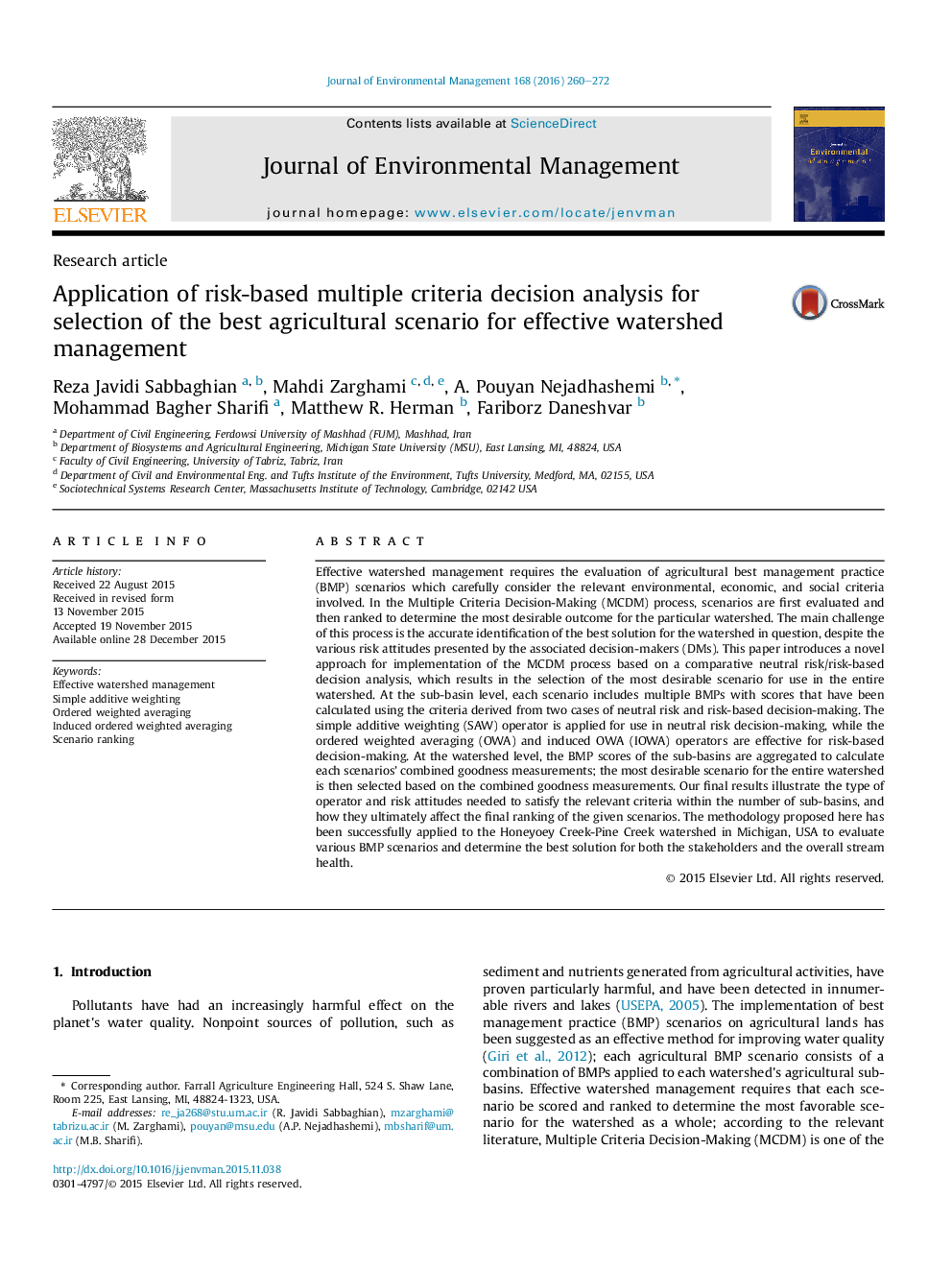| کد مقاله | کد نشریه | سال انتشار | مقاله انگلیسی | نسخه تمام متن |
|---|---|---|---|---|
| 1055566 | 1485244 | 2016 | 13 صفحه PDF | دانلود رایگان |
• A novel comparative neutral risk/risk-based decision analysis was introduced.
• Simple Additive Weighting applied to the neutral risk decision-making.
• Ordered Weighted Averaging applied to the risk-based decision-making.
• Induced Ordered Weighted Averaging applied to the risk-based decision-making.
• The best scenario is selected based on combined goodness measurements.
Effective watershed management requires the evaluation of agricultural best management practice (BMP) scenarios which carefully consider the relevant environmental, economic, and social criteria involved. In the Multiple Criteria Decision-Making (MCDM) process, scenarios are first evaluated and then ranked to determine the most desirable outcome for the particular watershed. The main challenge of this process is the accurate identification of the best solution for the watershed in question, despite the various risk attitudes presented by the associated decision-makers (DMs). This paper introduces a novel approach for implementation of the MCDM process based on a comparative neutral risk/risk-based decision analysis, which results in the selection of the most desirable scenario for use in the entire watershed. At the sub-basin level, each scenario includes multiple BMPs with scores that have been calculated using the criteria derived from two cases of neutral risk and risk-based decision-making. The simple additive weighting (SAW) operator is applied for use in neutral risk decision-making, while the ordered weighted averaging (OWA) and induced OWA (IOWA) operators are effective for risk-based decision-making. At the watershed level, the BMP scores of the sub-basins are aggregated to calculate each scenarios’ combined goodness measurements; the most desirable scenario for the entire watershed is then selected based on the combined goodness measurements. Our final results illustrate the type of operator and risk attitudes needed to satisfy the relevant criteria within the number of sub-basins, and how they ultimately affect the final ranking of the given scenarios. The methodology proposed here has been successfully applied to the Honeyoey Creek-Pine Creek watershed in Michigan, USA to evaluate various BMP scenarios and determine the best solution for both the stakeholders and the overall stream health.
Journal: Journal of Environmental Management - Volume 168, 1 March 2016, Pages 260–272
